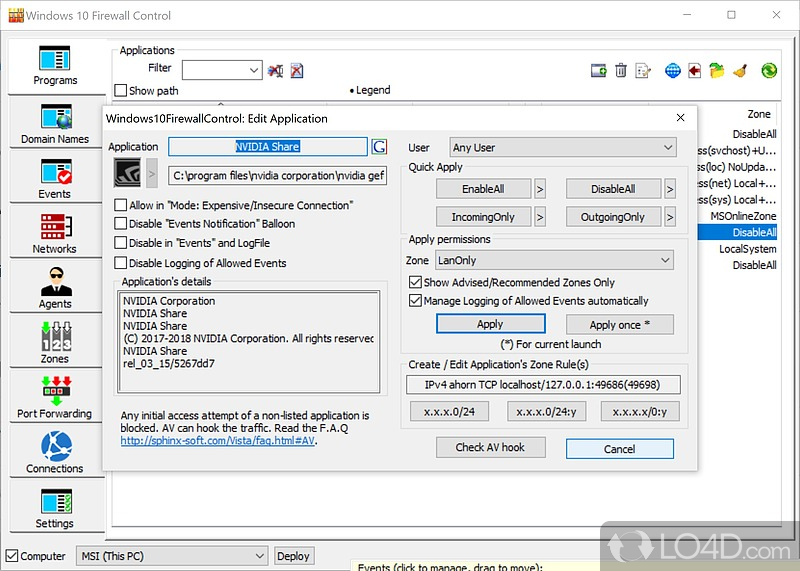Windows Program Hook
Posted : adminOn 3/12/2018
Jun 21, 2011 So here I present a Windows hooks detector. The software has been tested on Windows XP and Windows 7. According to the MSDN documentation for Windows. The code sample shows how to set up a Windows Hook to hook mouse and keyboard inputs in a VC++ application.
The reality is that every computer and television match-up will be different especially when either of the two devices is older. If you were to go out to an electronics store right now to get a new PC and a new TV, you're likely to come home with a laptop and a television rocking HDMI ports.

Sometimes you might find a laptop that prefers DisplayPort to HDMI, but overall HDMI is the current connector king. Older devices, however, can have more esoteric needs with bizarre connectors that are almost never used today. Here's a list of the connectors you're likely to find: • VGA – A longtime standard for computers. Activation Code For Driver Updater there. Snajper U Bram Stalingradu Ebook. This is a video-only connection.
You will need separate cables to connect an audio source if you want sound from your computer on the TV. Download Cccam Tar File Downoad. If you're connecting a desktop, it will almost certainly have component connectors on the back allowing you to transfer sound. • DVI –Another video-only connector. Again you will need separate cables to connect an audio source if you want sound on the TV. • DisplayPort – Carries both video and audio.
A popular choice for PCs, but you're unlikely to find it on a modern television. • HDMI – The current gold standard for computers and TVs.
It carries a high definition video signal and provides audio as well. For the most hassle-free experience look for new TVs and PCs that use this interface. Now that we know the most likely components you'll be dealing with here's what you do. First, determine the video/audio outputs on your computer. Then figure out the video/audio inputs on your television. If they have the same output/input interface (such as HDMI) then all you have to do is go to the electronics store (or your favorite online retailer) and purchase the correct cable. If you don't have the same connection type, then you're going to need an adapter.
Now don't let this scare you. Adapters are relatively cheap and will cover most of the standards you see here. Let's say you have DisplayPort on a laptop, but HDMI on the television. In this case, you'll need a DisplayPort cable long enough to reach the television, and then a small, snap-on DVI-HDMI adapter to complete the connection between the PC and TV. If you need to go from HDMI on a newer PC to S-Video on an older television, however, you may need to purchase a slightly more complicated adapter.
These are usually small boxes that sit in your entertainment center. In these cases, you will need an HDMI cable that runs from your PC to the adapter box, and then an S-Video cable that runs from the box to the television (don' forget to check the number of pins the S-Video connection needs!).
Even with adapters, connecting a PC to a television can be as easy as connecting a monitor. The important thing is to make sure you have the correct cable(s) to connect the two devices. Once you're connected, you may have to to display the desktop properly on the bigger screen. Most modern PCs will automatically determine the resolution needed, however. That said owners of may run into more problems than most.
4K is relatively new and may require more graphics horsepower than your PC can muster--especially if the computer is older. Now that you've got a connection up and running it's time to put that PC to work. Windows 7 and earlier versions contain a multimedia program called that you can use to watch and record television programs, view your digital photos and listen to music. Windows 8 users can also purchase WMC for an extra fee, while Windows 10 users will need a third-party suite for this purpose such as.